Western Red Birch (Water Birch)
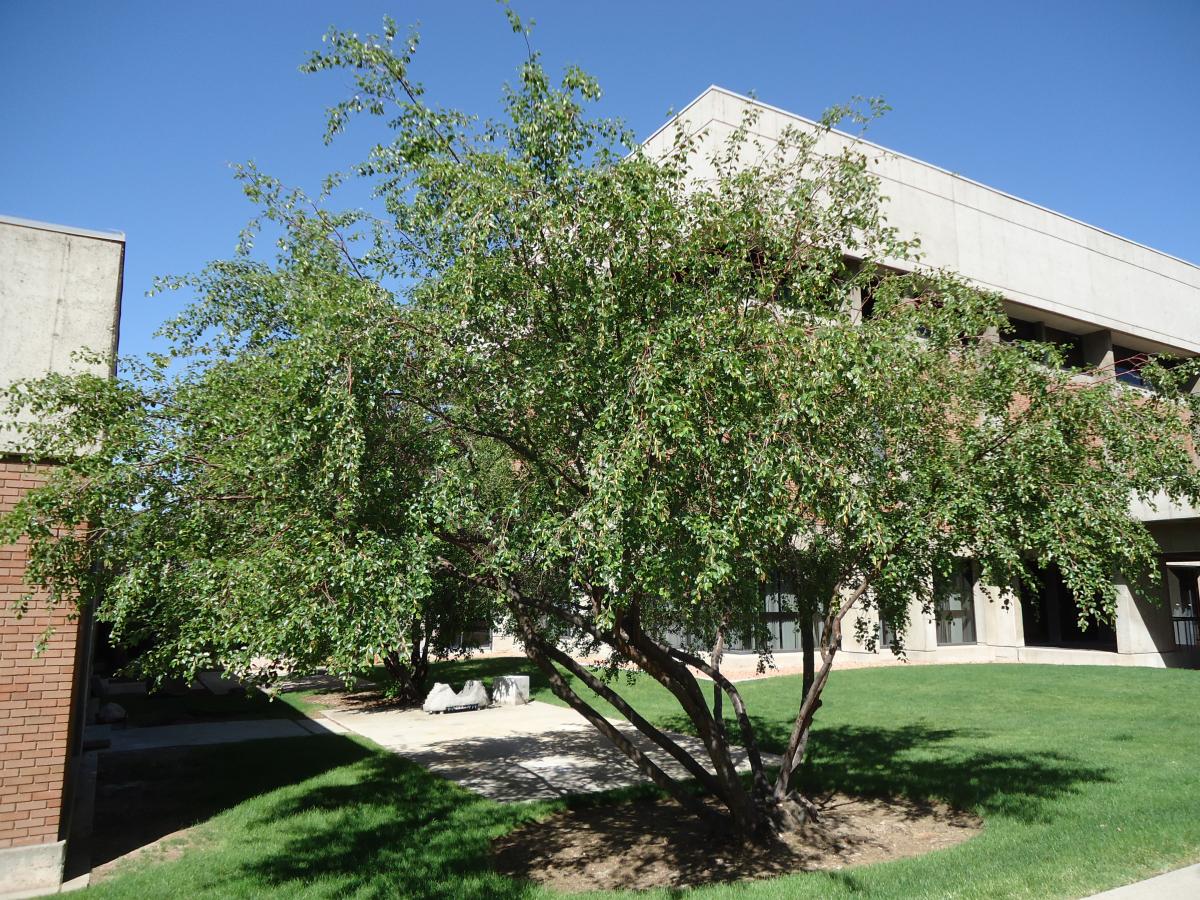
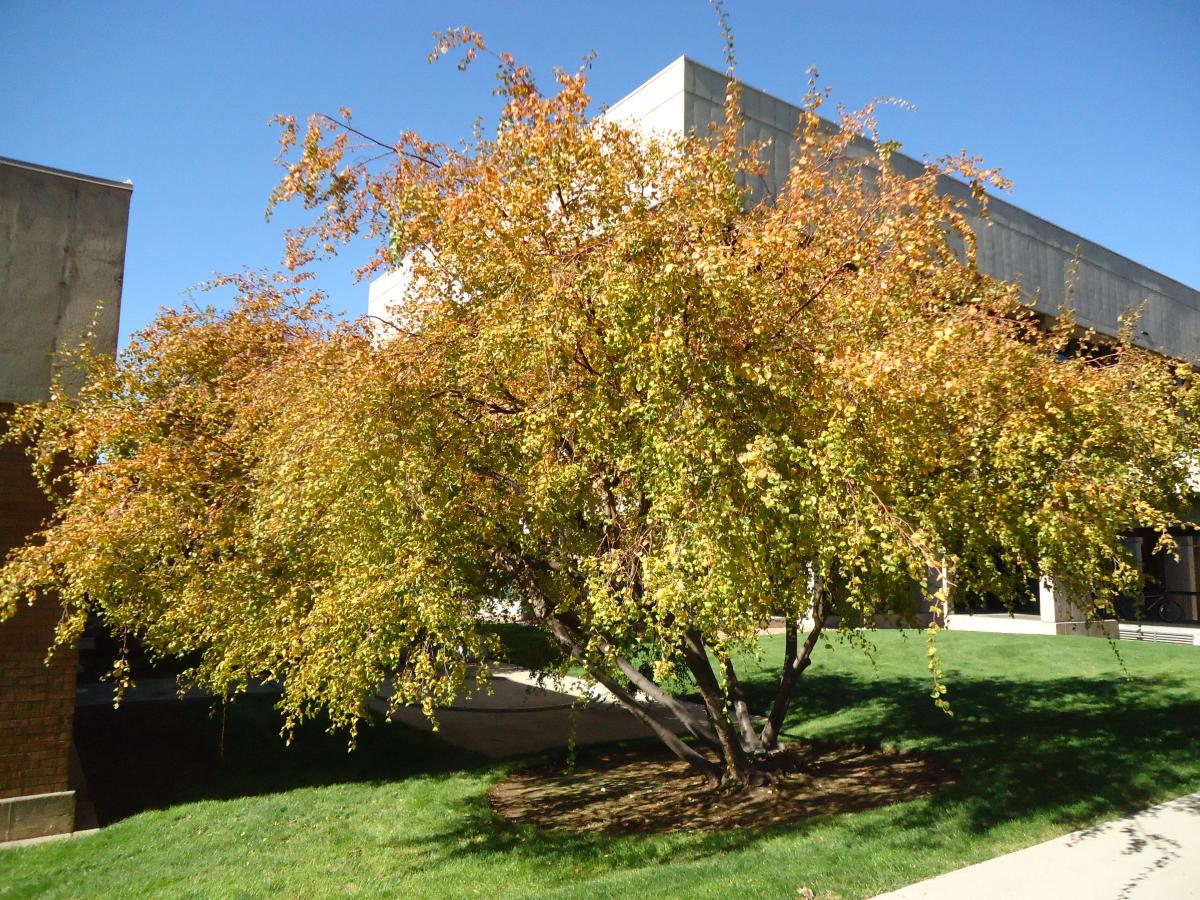
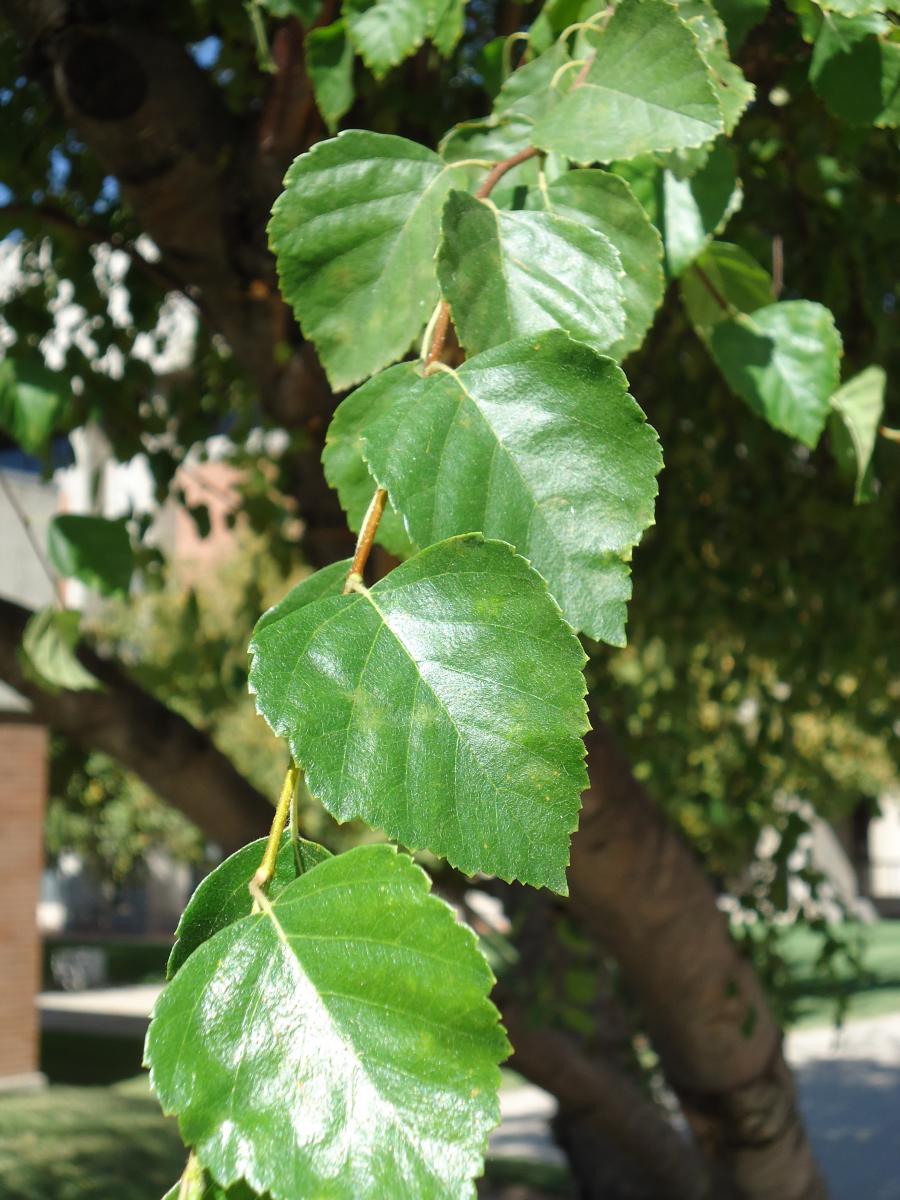
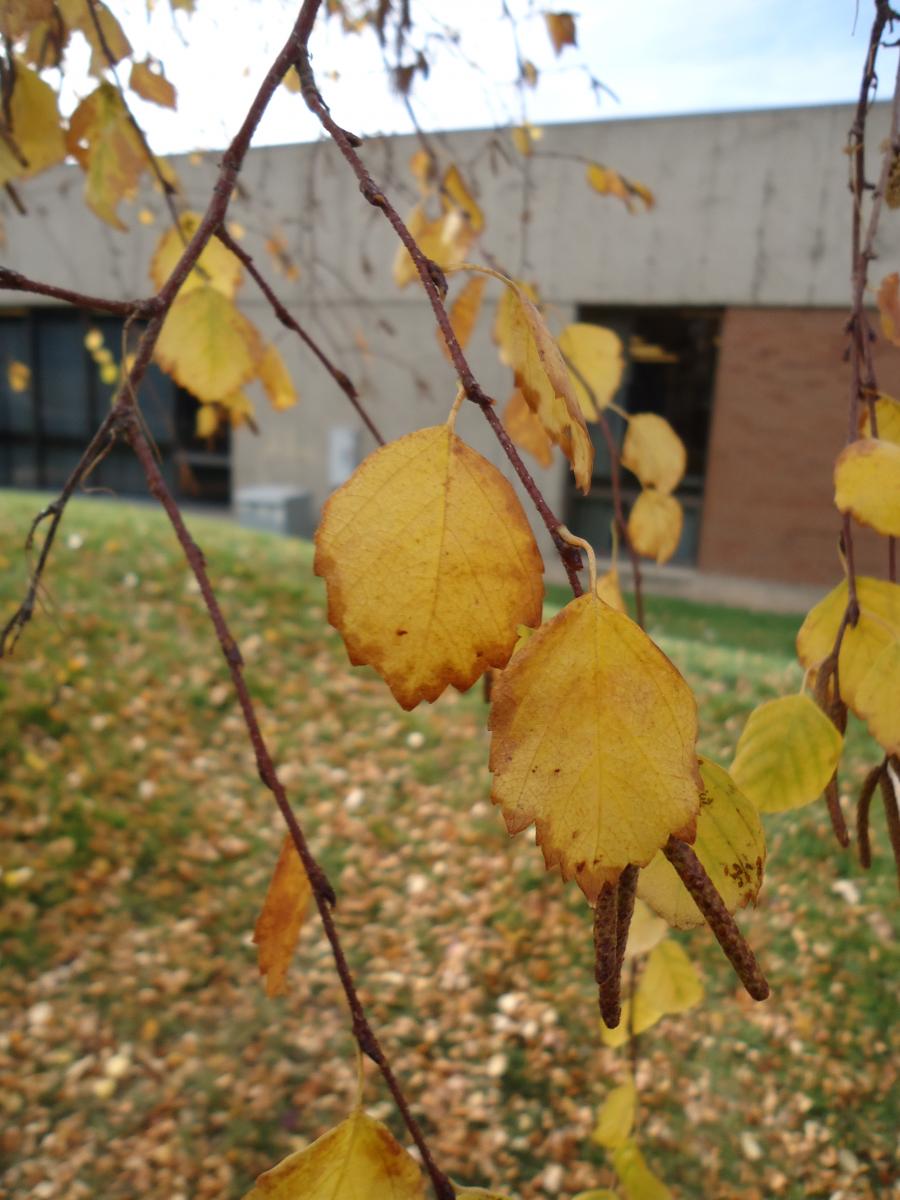
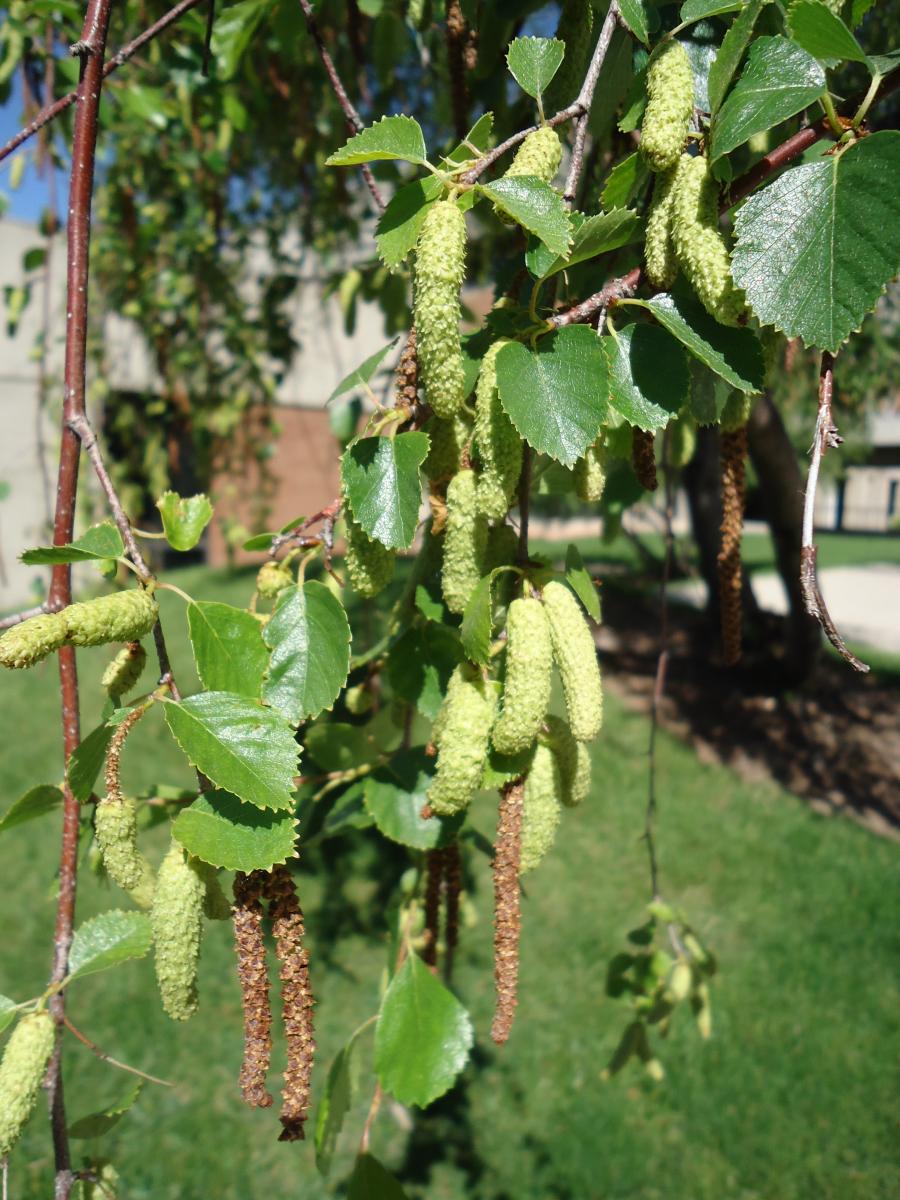
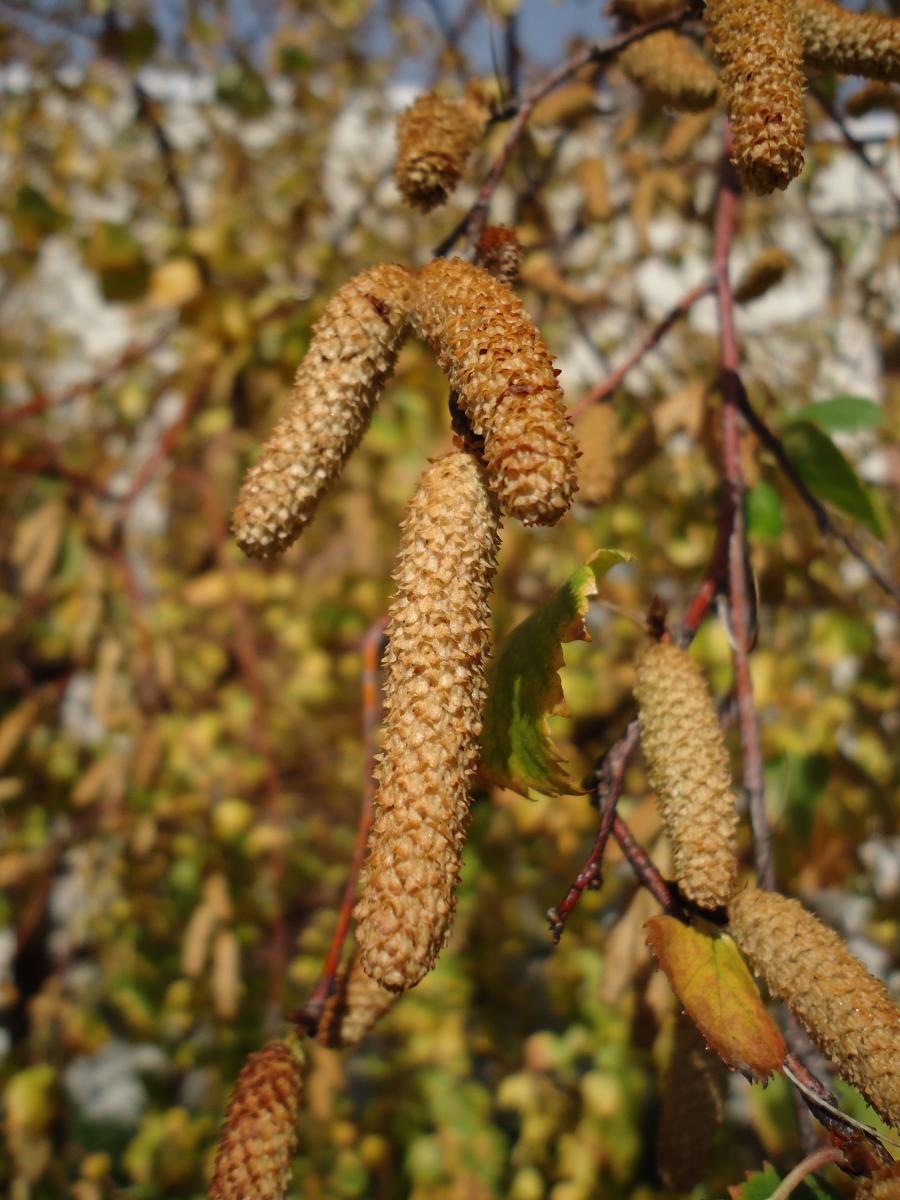
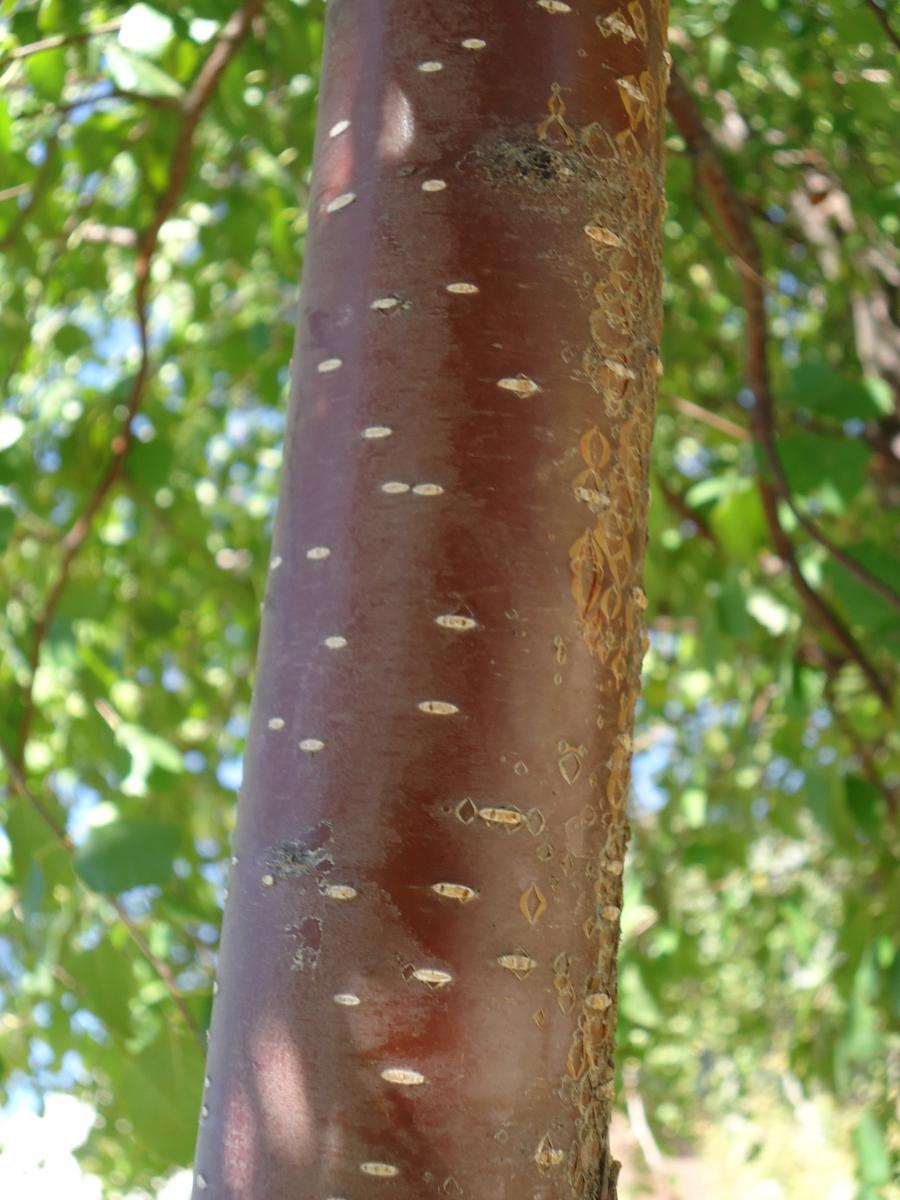
Betula occidentalis
Leaves: Deciduous. Leaves are 1 to 2 inches long, ¾ to 1½ inches wide, with an ovate or somewhat rounded, slightly heart-shape. They are pointed at the tip with a singly or doubly serrate leaf edge and somewhat rounded base. Dark green color above, light yellow-green beneath. Dull yellow color in fall.
Bark/Twigs: Bark is a very characteristic thin, dark, shiny reddish-brown to almost purple color, smooth but broken by distinct, long, horizontal lines called lenticels. Twigs are light green when young, becoming dark red-brown when older.
Flowers/Fruit: Inconspicuous flowers. Fruit is a small, winged nutlet arranged in a cone-like, cylindrical, scaly catkin that hangs down, 1 to 1¼ inch long. Matures in fall.
Mature size and shape: Medium. 25 to 35 feet high. Graceful multi-trunked tree with slender spreading and pendulous branches.
General information/special features: Utah native. Plant in full sun to light shade. Intermediate shade tolerance. Prefers abundant water, but may survive on drier sites. Occurs naturally in moist areas along streams and lakes. Able to withstand moderately high soil pH.
Landscape use and maintenance: Ornamental multi-trunked tree. Slow growing rate. Average maintenance. This tree that does well only if very hot, dry sites are avoided. Probably more borer resistant that other birches.
USDA Hardiness Zone: 3 to 8
Family/Origin: Betulaceae – Birch. Native to much of the western U.S. and southern Canada. Utah's only native birch.
Campus Use: Uncommon. Can be found on east side of Sculpture Building (Bld 39) and north of Art Building (Bld 38).
